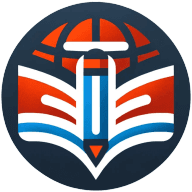7 Edtech Tools that Transform Teaching and Student Engagement
The landscape of education is rapidly evolving, with innovative EdTech tools reshaping how students learn and teachers instruct. From AI-powered language learning to virtual reality field trips, these cutting-edge technologies are revolutionizing classroom engagement and personalized learning experiences. Drawing on insights from industry experts, this article explores seven transformative EdTech tools that are setting new standards in teaching effectiveness and student participation.
- AI Chatbots Boost Language Learning Confidence
- Interactive Digital Signage Transforms Classroom Dynamics
- Virtual Reality Field Trips Enhance Experiential Learning
- Gamification Platforms Increase Student Engagement
- Adaptive Learning Software Personalizes Educational Pathways
- Online Whiteboards Foster Remote Collaboration Skills
- Real-Time Analytics Enable Responsive Teaching Strategies
AI Chatbots Boost Language Learning Confidence
The implementation of AI chatbots in my Spanish classroom has fundamentally transformed how students practice and engage with the language. These tools provide personalized conversation practice that adapts to individual student needs, allowing students to build confidence at their own pace before participating in full-class discussions. Since introducing these chatbots in early 2024, I've observed an increase in classroom conversations as students feel more prepared, comfortable, and more willing to use their Spanish skills with peers. This technology has not only enhanced language acquisition but also created valuable opportunities to teach responsible AI use as part of their educational experience. I've used MagicSchool AI and School AI, and students love these experiences!

Interactive Digital Signage Transforms Classroom Dynamics
The EdTech tool that changed my teaching practice was interactive digital signage. I used it in my classroom to display live learning prompts, student contributions, and multimedia examples relevant to our lessons. Instead of relying on slides or static boards, I used the signage to show live polls, rotating questions, and student-created visuals.
The engagement was instant. Students who were quiet began to interact through the on-screen polls and content submissions, which gave them a voice without the pressure of speaking out loud. It turned the classroom into a collaborative space, not a one-way lecture. The technology made learning feel alive - concepts weren't confined to textbooks anymore; they were visible, evolving, and personal. The biggest change was ownership - students started to treat lessons as shared experiences, not just assignments, which made the learning process so much more dynamic and inclusive.

Virtual Reality Field Trips Enhance Experiential Learning
Virtual reality field trips are revolutionizing experiential learning in education. Students can now explore ancient civilizations, dive into ocean depths, or walk on distant planets without leaving the classroom. This technology brings textbook concepts to life, making abstract ideas tangible and memorable.
It also allows for safe exploration of environments that would be otherwise inaccessible or dangerous. Virtual reality field trips foster a deeper understanding and spark curiosity in ways traditional methods cannot match. Educators should consider incorporating virtual reality experiences into their curriculum to enhance student engagement and comprehension.
Gamification Platforms Increase Student Engagement
Gamification platforms are transforming the educational landscape by boosting student motivation and knowledge retention. These tools turn learning into an exciting adventure, where students earn points, badges, and rewards for completing tasks and mastering concepts. The competitive and interactive nature of these platforms makes traditionally dry subjects more appealing and engaging.
Students become more invested in their own learning process, leading to improved focus and better academic outcomes. Gamification also provides immediate feedback, allowing learners to track their progress and identify areas for improvement. Teachers should explore gamification options to make their lessons more interactive and enjoyable for students.
Adaptive Learning Software Personalizes Educational Pathways
Adaptive learning software is personalizing educational pathways for students like never before. This innovative technology uses algorithms to assess each learner's strengths, weaknesses, and learning pace. It then tailors the content and difficulty level to match the individual's needs, ensuring that no student is left behind or held back.
This personalized approach helps build confidence and reduces frustration by providing just-right challenges. It also allows teachers to efficiently manage diverse classrooms, giving extra support where needed and additional challenges to advanced learners. Educators should consider implementing adaptive learning software to provide a more individualized and effective learning experience for their students.
Online Whiteboards Foster Remote Collaboration Skills
Collaborative online whiteboards are enhancing remote group work and fostering teamwork skills. These digital platforms allow students to brainstorm, share ideas, and work on projects together in real-time, regardless of their physical location. They provide a visual space for creativity and problem-solving, mimicking the benefits of in-person collaboration.
Features like sticky notes, drawing tools, and file sharing make it easy for students to contribute and build on each other's ideas. This technology also prepares students for the digital collaboration they'll likely encounter in future workplaces. Teachers should explore incorporating online whiteboards into their lessons to promote active participation and collaborative learning.
Real-Time Analytics Enable Responsive Teaching Strategies
Real-time analytics are empowering teachers to adjust their instruction immediately based on student performance. These tools provide instant insights into student understanding, engagement levels, and areas of difficulty. Teachers can see which concepts are clear and which need more explanation, allowing them to adapt their teaching strategies on the fly.
This immediate feedback loop helps prevent students from falling behind and ensures that class time is used efficiently. It also allows for early intervention when students are struggling, potentially preventing long-term academic challenges. Educators should consider adopting real-time analytics tools to make data-driven decisions and provide more responsive, effective instruction.

